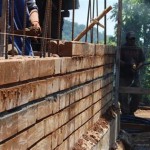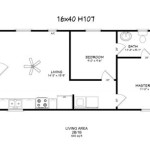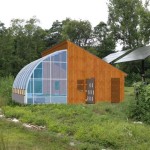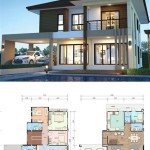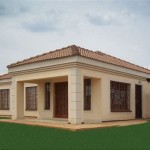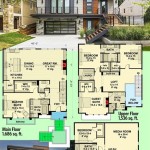Large Dog House Plans For Two Dogs
Sharing is caring, and for some dog owners, that means providing a shared living space for their canine companions. A large dog house designed for two dogs offers several benefits, including warmth, companionship, and a sense of security. However, building a suitable structure requires careful planning and consideration of the dogs' size, breed, and personalities. This article will explore the key aspects of designing and building a large dog house for two dogs.
The first step in planning a two-dog dog house is determining the appropriate size. Simply doubling the dimensions of a single-dog house is insufficient. Adequate space for two dogs requires considering their combined weight, length, and height. Each dog should be able to stand, turn around comfortably, and lie down without being cramped. A good rule of thumb is to measure each dog's length and height while standing, then add several inches to both measurements for comfortable movement. Multiply the combined length by 1.5 to determine the minimum interior length of the dog house, and use the combined height as the minimum interior height.
Choosing the right materials is crucial for durability and insulation. Pressure-treated lumber is a popular choice for its resistance to rot and insect damage. Cedar and redwood are also excellent options, offering natural weather resistance and a pleasant aroma. Avoid using chemically treated wood, as it can be harmful to dogs. For insulation, consider using rigid foam insulation board, which can be fitted between the inner and outer walls of the dog house. This helps to regulate the temperature inside, keeping the dogs warm in winter and cool in summer.
The design of the dog house should prioritize functionality and ease of cleaning. A sloped roof facilitates water runoff, preventing leaks and moisture buildup. A removable roof panel simplifies access for cleaning and provides a convenient way to check on the dogs. The floor should be slightly elevated off the ground to prevent moisture from seeping in and to improve insulation. Consider using a durable, waterproof flooring material that is easy to clean, such as composite decking or marine-grade plywood.
Ventilation is essential for maintaining a healthy environment inside the dog house. Proper ventilation helps to regulate temperature and humidity, preventing the buildup of stale air and odors. Incorporate vents on opposite sides of the dog house, preferably near the roofline, to promote air circulation. Ensure the vents are covered with mesh or screening to prevent insects and other pests from entering.
Consider the specific needs of the dogs when designing the interior. If the dogs tend to compete for resources, consider incorporating a divider to create separate sleeping areas. This can help to reduce stress and prevent territorial disputes. Provide ample bedding, such as straw or cedar chips, for comfort and insulation. Avoid using blankets or fabrics, as they can retain moisture and harbor bacteria.
Placement of the dog house is an important consideration. Choose a location that provides shelter from the elements, such as wind, rain, and direct sunlight. Position the dog house on a level surface to ensure stability and prevent water pooling. Consider the surrounding landscape and choose a spot that offers some shade during the hotter months. Avoid placing the dog house in low-lying areas prone to flooding.
Building the dog house requires careful attention to detail. Ensure all joints are secure and sealed to prevent drafts. Use galvanized nails or screws to resist rust. Sand all edges smooth to prevent splinters and injuries. Apply a weatherproof sealant to the exterior of the dog house to protect the wood from the elements and extend its lifespan.
Regular maintenance is essential for keeping the dog house clean and functional. Clean the interior regularly, removing bedding and debris. Inspect the structure for any signs of damage, such as cracks or loose boards, and repair them promptly. Re-apply weatherproof sealant as needed to maintain its protective barrier. By following these guidelines, a well-built and maintained dog house can provide a comfortable and safe haven for two canine companions for years to come.
Adapting the design to the specific climate is also crucial. In colder climates, consider adding a door flap to help retain heat. Insulating the floor, walls, and roof is even more critical in these regions. In warmer climates, ensure adequate ventilation to prevent overheating. Consider elevating the dog house further off the ground to promote airflow underneath.
Finally, remember to involve a veterinarian or experienced dog handler in the planning process. They can provide valuable insights into breed-specific needs, behavioral considerations, and potential health concerns. By carefully considering these factors and investing time and effort into the design and construction, a two-dog dog house can be a welcome addition to any dog-loving home.

How To Build A Double Dog House Howtospecialist Step By Diy Plans

Build A Two Room Dog House Luxury Diy Plans

New Home For The Other Members Of Family Dog House Diy Outdoor Plans

15 Free Large Dog House Plans Your Dogs Will Love Pallet Diy

5 Droolworthy Diy Dog House Plans Healthy Paws

Double Dog House Plans Myoutdoorplans

Diy Plans For Xl Double Dog Kennel Extra Large Crate

B G Solid Wood Construction Heated Extra Large Dog House For One Or Two Dogs Plans

Diy Plans For Xl Double Dog Kennel Extra Large Crate

Concept Insulated Dog House 2

